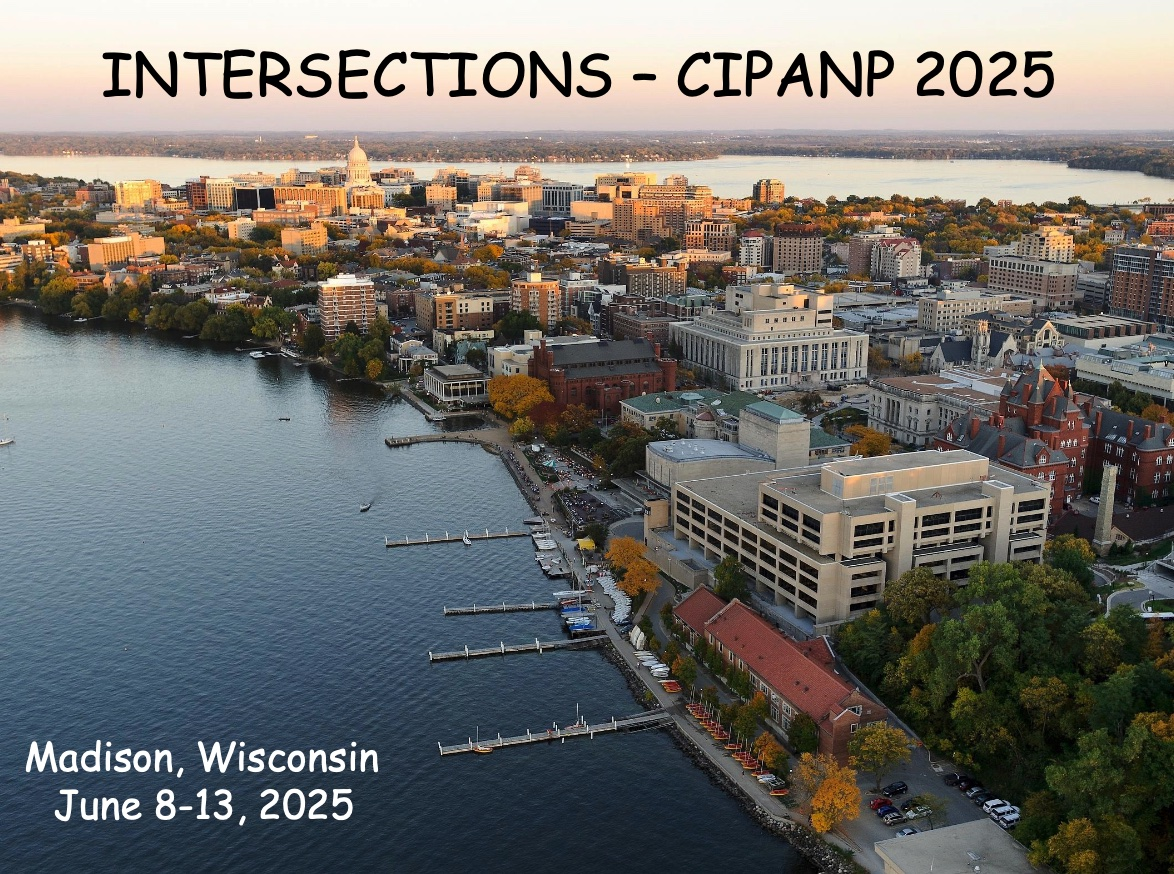Conveners
Parton and Gluon Distributions in Nucleons and Nuclei: Parallel 1
- Po-Ju Lin (National Central University)
Parton and Gluon Distributions in Nucleons and Nuclei: Parallel 4
- Paul Reimer (Argonne National Laboratory)
Parton and Gluon Distributions in Nucleons and Nuclei: Parallel 7
- Paul Reimer (Argonne National Laboratory)
Parton and Gluon Distributions in Nucleons and Nuclei: Parallel 10
- There are no conveners in this block
We discuss the implementation of general mass variable flavor number (GMVFN) schemes (such as ACOT or S-ACOT) for the treatment of heavy-quark mass effects in global PDF analyses at higher orders in QCD in terms of subtraction and residual PDFs. We present the application to Z+heavy flavor production and other cases of interest for precision phenomenology at hadron colliders.
Despite decades of research the gluon remains the least known object in QCD. This is dictated by both theoretical and experimental challenges due to the non-trivial dynamics generated by gluons. Understanding of this dynamics is one of the most important problems in QCD. One of the key manifestations of this dynamics is the gluon saturation associated with the non-linear effects in the gluon...
Measuring parton distribution functions (PDFs) in the valence region at high Bjorken-x is one pillar of the experimental program of Jefferson Lab at 12 GeV. In this talk, I will review the status of our knowledge of polarized and unpolarized nucleon structure functions at very high x. I will especially focus on the recent “BONuS12” experiment with CLAS12 at Jefferson lab to measure the...
The neutron spin asymmetry, An1 , serves as a pivotal observable for exploring the spin structure of the nucleon. Recent experiments at Jefferson Lab employing polarized 3He targets have extracted An1 over an extended kinematic range into larger xB , while maintaining high statistical precision. The experiment was carried out in Hall C with up to 10.386 GeV polarized electron beams scattering...
Deep virtual exclusive [electroproduction] scattering (DVES) is predicted to provide access to novel tomographic distributions of quarks and gluons inside nucleons, nuclei, and other hadrons. I will discuss recent progress in both virtual Compton scattering (DVCS) and deep virtual meson production on the nucleon and on nuclei, Including recent data from Jefferson Lab and COMPASS. In DVCS,...
Generalized Parton Distributions (GPDs) provide information of multi-dimensional partonic structure of the nucleon and have received considerable attention. To access GPDs, there have been various dedicated experimental efforts of exclusive reactions, and their results are crucial for exploring the multivariable dependence of GPDs. Using the 160 GeV muons beams provided at CERN SPS,...
Two hadron production in semi-inclusive deep inelastic scattering is an important tool to probe nucleon structure and study hadronization. In this talk, an overview of the observables accessible with dihadron production will be given along with recent experimental results. The focus of the talk will be on recent and projected results from the CLAS12 experiment at Jefferson Lab using...
In this talk, I will provide an update on recent advancements in the phenomenology of Transverse Momentum Distributions (TMDs), with a particular focus on the latest work from the MAP Collaboration. TMDs play a crucial role in understanding the three-dimensional structure of hadrons and are essential for describing processes such as semi-inclusive deep inelastic scattering (SIDIS) and...
We present the first lattice quantum chromodynamics (QCD) calculation of the pion valence-quark transverse-momentum-dependent parton distribution function (TMDPDF) within the framework of large-momentum effective theory (LaMET). Using correlators fixed in the Coulomb gauge (CG), we computed the quasi-TMD beam function for a pion with a mass of 300 MeV, a fine lattice spacing of $a = 0.06$ fm...
In this talk, I will summarize our (PNDME collaboration [1]) lattice QCD calculations of the flavor diagonal charges of the nucleon using ensembles generated by the MILC collaborations. These include both connected and disconnected contributions, and the full nonperturbative calculation of the renormalization constants in the 2+1 flavor theory is used to present the final results in the...
The $x$-dependent behavior of gluons remains important for providing insight to the structure of hadrons. In this talk, we present preliminary results for continuum limit extraction of the unpolarized gluon PDF in the proton from lattice QCD using four $N_f=2+1+1$ ensembles of maximally twisted mass fermions with clover improvement with pion mass $m_{\pi}\approx250~\mathrm{MeV}$ and lattice...
Masses and spins of hadrons are fundamental quantities in physics; however, their origins are not understood yet and their investigations are major purposes of building electron-ion colliders in 2030's. Both of them can be investigated by generalized parton distributions (GPDs). The $t$-channel or spacelike ($s$-channel or timelike) GPDs are studied by deeply virtual Compton scattering...
Generalized Parton Distributions (GPDs) are some of the most intriguing quantities in QCD because they provide a spatial tomography of nucleons and nuclei, and their moments connect several aspects of hadron structure, such as parton distribution functions, electromagnetic and gravitational form factors, orbital angular momentum, and the nucleon mass. These properties make GPDs some of the...
Structure functions of the spin-1 deuteron will be investigated experimentally from the late 2020's at various facilities such as Thomas Jefferson National Accelerator Facility, Fermi National Accelerator Laboratory, nuclotron-based ion collider facility (NICA), and electron-ion colliders. We expect that a new high-energy spin-physics field could be created by these projects. In this paper...

